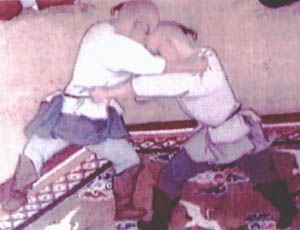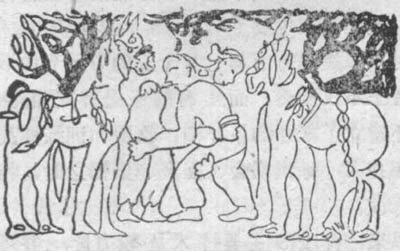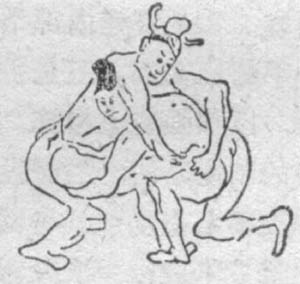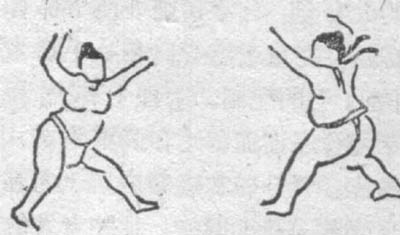
The origins of Shuai-Chiao are as old as these of Chinese civilization itself. Since time immemorial, man has fought, and his most basic fighting instinct has always been to grapple. This is evidenced by ancient artwork from cultures around the world, depicting combat through some sort of grappling.

Chin Dynasty (246 BC ~ 207 BC)
Shuai-Chiao Artwork in Ancient Record The earliest recorded dynasty, the Chin (or Qin) Dynasty lasted from 246 BC to 207 BC. It was also the shortest Chinese Dynasty, lasting only during the reign of one monarch – the legendary Chin Shih-Huang Di. Chin Shih-Huang was known for his remarkable cruelty and ironhanded rule. He ordered the first burning of books, the construction of the Great Wall (which protected China’s Northern borders from the invasion of barbarians), and the legalist school of Chinese philosophy.
Chin Shih-Huang kept his military strong, and combat training was emphasized during his short reign.

Yuan Dynasty (1277 ~ 1367)
Shuai-Chiao Artwork in Ancient Record The Mongol hordes were the great Asian Conquerors of early history, leaving their mark on cultures from Eastern Europe to the Pacific Ocean. These great conquerors had a nomadic lifestyle that promoted combat skills for all males. Their tribal games revolved around the so-called 3 Masculine Sports: Horsemanship, archery, and wrestling.

Mongolian Wrestling, also known as Boke, or Bokh in the Mongol tongue, is a rugged hand-to-hand sport, relying more on raw physical power than a wide variety of techniques. Historically, Mongolian Wrestling is reputed to have influenced Chinese wrestling with its power techniques. Shuai-Chiao Artwork in Ancient Record
The basic premise behind Bokh is to force an opponent to touch any part of their body other than the feet to the ground, placing them in a position of inferiority. This kind of training served the Mongol hordes well in their conquests, earning them a reputation as fierce soldiers on foot and on horseback. It was this type of military might that allowed Ganghis Khan to Conquer China at the end of the Sung Dynasty in 1127.

Ming Dynasty (1277 ~ 1367)
The Ming Dynasty was the re-establishment of Chinese Sovereignty, following the Mongol conquest. During this time, some of China’s martial arts began to flourish abroad, and Shuai-Chiao also made its presence felt overseas.
Shuai-Chiao Artwork – See the resemblance modern Sumo with this old Shuai-Chiao Artwork Chen Yuan-Ping is credited for bringing Shuai-Chiao to Japan. His intimate knowledge of Shuai-Chiao’s joint locks, controls, takedowns, and throws formed the basis of what became Jiu-Jitsu, which later evolved into Judo and Aikido.

Ching Dynasty (1644 ~ 1911)
Shuai-Chiao Artwork in Ancient Record At the fall of the Ming Dynasty, China once again fell into the hands of outsiders- this time, the Manchus. Calling their dynasty the Ching (Qing) Dynasty, the Manchus were ultimately responsible for the partitioning of China by foreign powers at the turn of the 20th Century.

Nonetheless, Shuai-Chiao still enjoyed an era of progress and development.
In the modern era, there were two great masters who brought Shuai-Chiao’s legacy into the forefront of Chinese combat arts.
